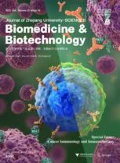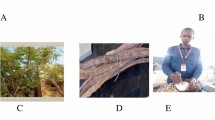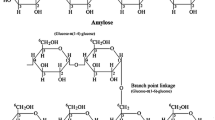Abstract
The objective of the investigation was to study the application of ultrasound reactor technology (USRT) as a disinfectant for reduction of fungi from sewage effluent. Fungi are carbon heterotrophs that require preformed organic compounds as carbon sources. USRT is an attractive means to improve water quality because of the system simplicity and no production of toxic by-products. An ultrasound reactor produces strong cavitation in aqueous solution causing shock waves and reactive free radicals by the violent collapse of the cavitation bubble. These effects should contribute to the physical disruption of microbial structures and inactivation of organisms. There was significant reduction in fungal growth, with decreased fungal growth with increasing USRT. In this study, ultrasound irradiation at a frequency of 42 kHz was used to expose suspensions of fungi to evaluate the disinfection efficacy of the ultrasound reactor. Also, this study showed that in this system more than 99% reduction of sewage fungi was achieved after 60 min.
Similar content being viewed by others
References
Anon, 2000. Water Quality Criteria, Report of the National Technical Advisory Committee to the Secretary of the Interior. Federal Water Pollution Control Administration, No. 25, Washington DC, USA.
APHA (American Public Health Association), 1989. Standard Methods for the Examination of Water and Wastewater, 17th Ed. American Public Health Association, Washington DC, USA.
Deinega, E.Y., 1986. Change in biophysical properties of microorganisms in the process of water disinfection. Water Chemistry and Technology, 8(2):132–134.
Everett, W.C., 1978. Ultrasonic disinfection system. US Patent, No. 4,086,057.
Gelate, P., Hodnett, M., Zeqiri, B., 2000. Supporting Infrastructure and Early Measurements. National Physical Laboratory Report, Teddington, Middlesex, UK, p.2–11.
Gong, C., Hart, D.P., 1998. Ultrasound induced cavitation and sonochemical yields. The Acoustic Society of America, 104:1–16.
Hua, I., Hoffmann, M.R., 1997. Optimization of ultrasonic irradiation as advanced oxidation technology. Environ. Sci. Technol., 31(8):2237–2243. [doi:10.1021/es960717f]
Hua, I., Thompson, J.E., 2000. Inactivation of E. coli by sonication at discrete ultrasonic frequencies. Water Res., 34(15):3888–3893. [doi:10.1016/S0043-1354(00)00121-4]
Joyce, E., Mason, T.J., Phull, S.S., Lorimer, J.P., 2002. The development and evaluation of ultrasound for the treatment of bacterial suspension. Ultrasonics Sonochemistry, 10(6):315–318. [doi:10.1016/S1350-4177(03)00101-9]
Kalumuk, K.M., 2003. Remediation and Disinfection of Water Using Jet Generated Cavitation. 5th International Symposium on Cavitation (CAV2003), Osaka, Japan.
Laborde, J.L., 1998. Acoustic cavitation field prediction at low and high frequency ultrasounds. Ultrasonics, 36(1–5): 581–587. [doi:10.1016/S0041-624X(97)00106-6]
Lauterborn, W., Ohl, C.D., 1997. Cavitation bubble dynamics. Ultrasonics Sonochemistry, 4(2):65–75. [doi:10.1016/S1350-4177(97)00009-6]
Neppiras, E.A., 1980. Acoustic cavitation. Phys. Rep., 61(3): 159–251. [doi:10.1016/0370-1573(80)90115-5]
Petrier, C., 1992. Unexpected frequency effects on the rate of oxidative processes induced by ultrasound. J. Am. Chem. Soc., 114(8):3148–3150. [doi:10.1021/ja00034a077]
Phull, S.S., Newman, A.P., Lorimer, J.P., Pollet, T.J., Mason, T.J., 1997. The development and evaluation of ultrasound in the biocidal treatment of water. Ultrasonics Sonochemistry, 4(2):157–164. [doi:10.1016/S1350-4177(97)00029-1]
Scherba, G., Weigel, R.M., Obrien, W.D., 1991. Quantitative assessment of the germicidal efficacy of ultrasonic energy. App. Environ. Microbiol., 57(7):2079–2084.
Suslick, K.S., 1994. The Chemistry of Ultrasound. Chicago, Encyclopedia Britannica, p.138–155.
Suslick, K.S., Crum, L.A., 1997. Sonochemistry and Sonoluminescence in Encyclopedia of Acoustics, Vol. 1. Wiley-Interscience, New York, p.271–282.
Suslick, K.S., Price, G., 1999. Applications of ultrasound to materials chemistry. Annu. Rev. Matl. Sci., 29(1):295–326. [doi:10.1146/annurev.matsci.29.1.295]
Tsukamoto, I., Yim, B., Stavarache, C.E., Furuta, M., Hashiba, K., Maeda, Y., 2004. Inactivation of saccharomyces by ultrasonic irradiation. Ultrasonics Sonochem., 11(2): 61–65. [doi:10.1016/S1350-4177(03)00135-4]
Author information
Authors and Affiliations
Additional information
Project supported by the Medical Sciences/University of Tehran, I.R. Iran
Rights and permissions
About this article
Cite this article
Dehghani, M.H., Mahvi, A.H., Jahed, G.R. et al. Investigation and evaluation of ultrasound reactor for reduction of fungi from sewage. J. Zhejiang Univ. - Sci. B 8, 493–497 (2007). https://doi.org/10.1631/jzus.2007.B0493
Received:
Accepted:
Issue Date:
DOI: https://doi.org/10.1631/jzus.2007.B0493




